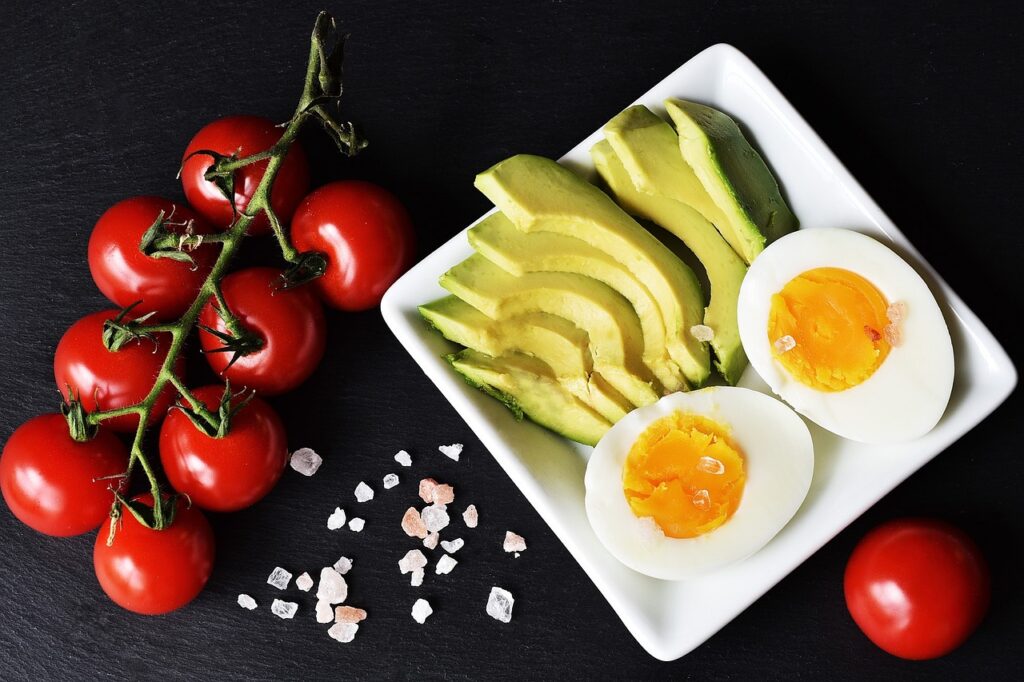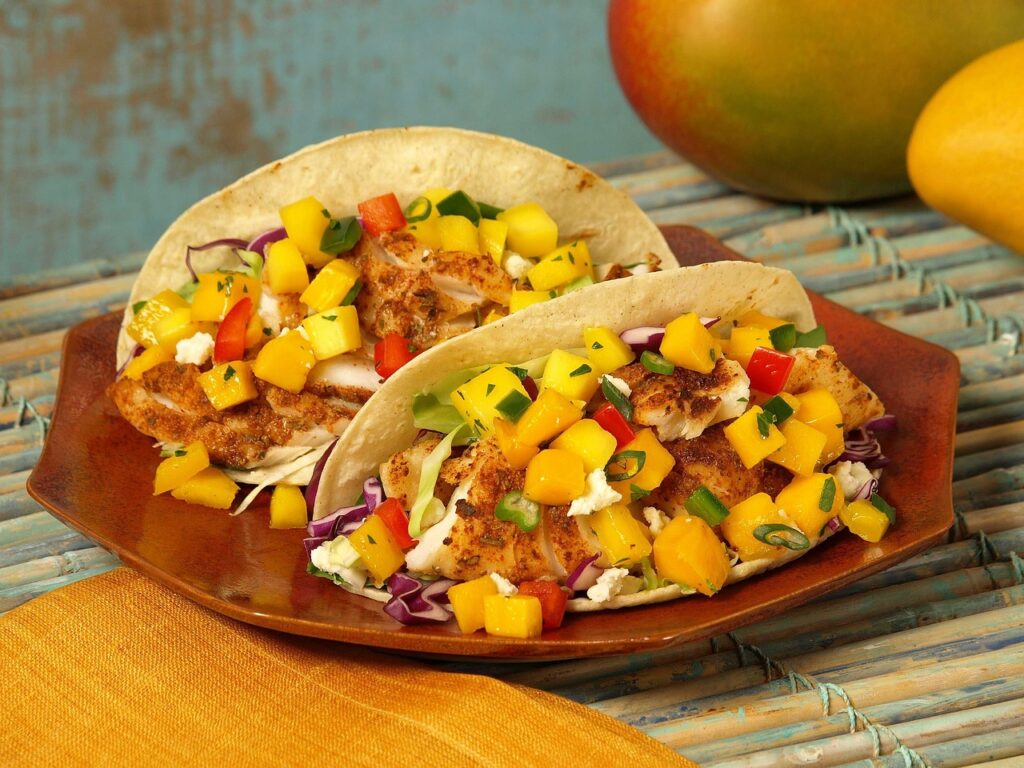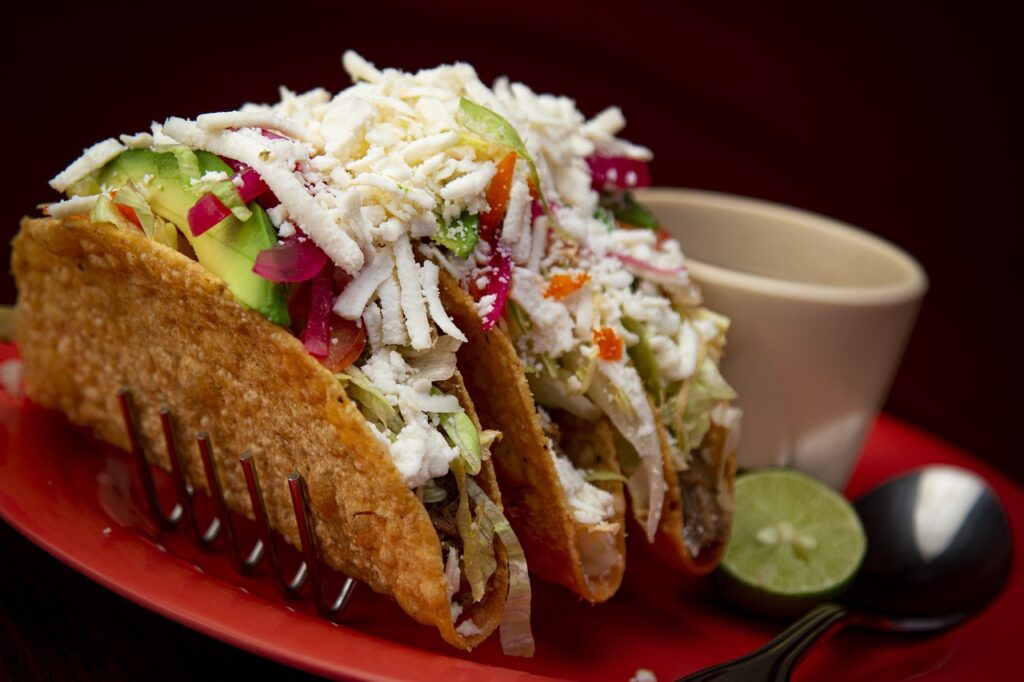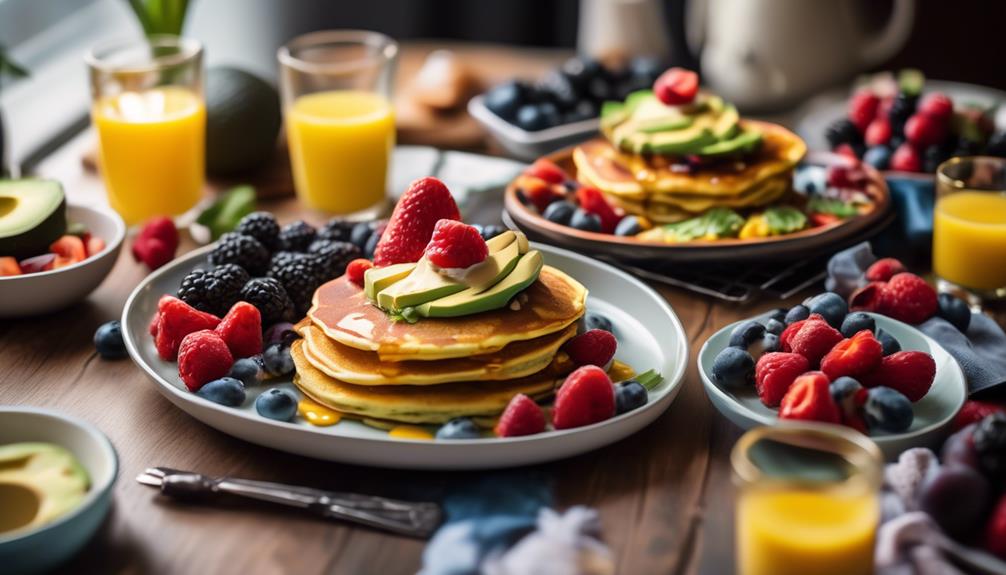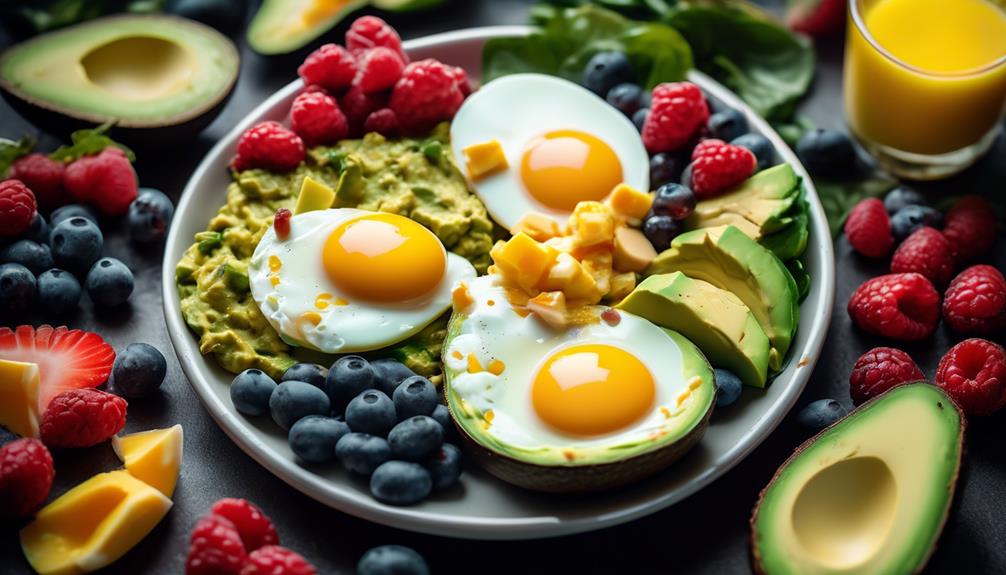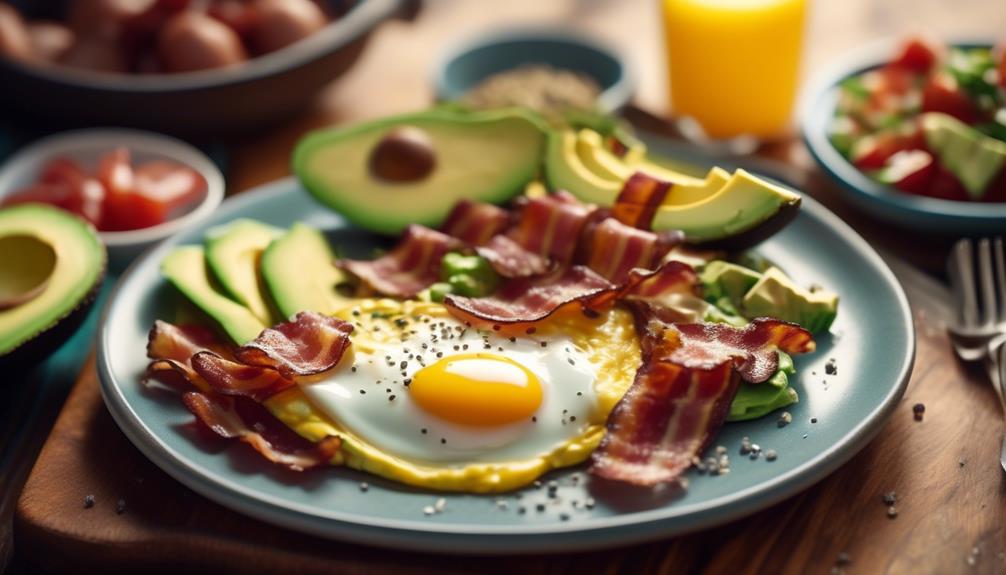Imagine sinking your teeth into a crisp, refreshing low-carb veggie wrap, as satisfying as a cool breeze on a hot summer day. If you're looking for a healthy and delicious way to indulge in a flavorful meal, then this step-by-step guide is just what you need.
From choosing the perfect low-carb wrap to enhancing the taste with a variety of fresh veggies, protein, and mouthwatering sauces, we'll walk you through the process of creating the ultimate veggie wrap.
Get ready to elevate your lunch game and discover a whole new world of culinary possibilities.
Choosing the Right Low-Carb Wrap
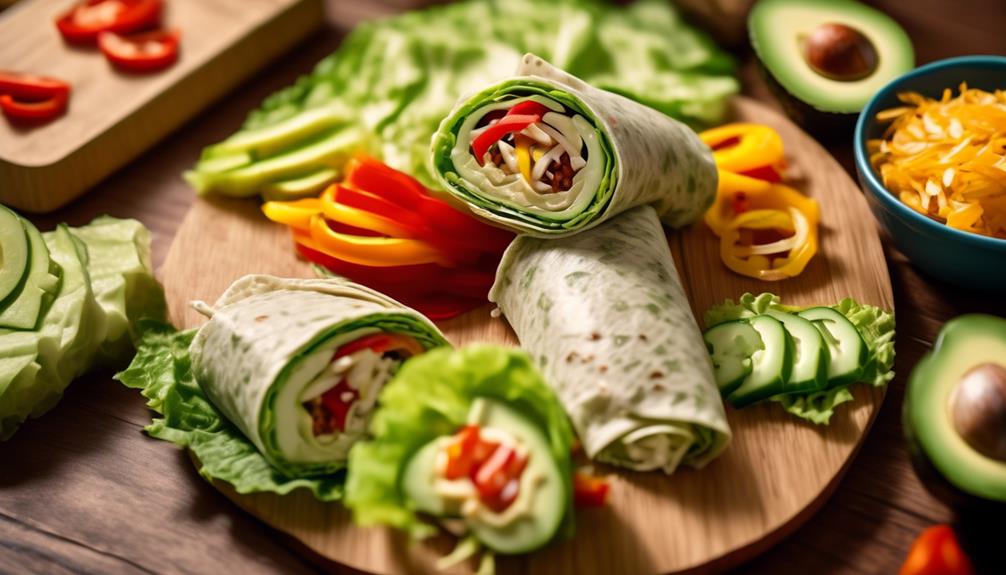
When it comes to selecting the perfect low-carb wrap for your veggie wraps, it's important to consider both taste and nutrition. Choosing low carb tortillas can be a great option to reduce your carbohydrate intake while still enjoying a delicious wrap. These tortillas are typically made with alternative flours such as almond or coconut flour, which are lower in carbs compared to traditional wheat or corn tortillas. They can be found in most grocery stores or specialty health food stores.
Exploring alternative wrap options is also a good idea. Lettuce wraps, for example, can be a refreshing and low-carb alternative to traditional tortillas. Large lettuce leaves, such as romaine or iceberg, can be used to wrap your filling and provide a satisfying crunch. Collard greens are another great option, as they're sturdy and hold up well when rolled.
When selecting your low-carb wrap, it's important to read the nutritional information on the packaging. Look for wraps that are low in carbohydrates and high in fiber. This will help keep you feeling full and satisfied. Additionally, consider the taste and texture of the wrap. Some low-carb tortillas can be quite dense or have a strong flavor, so it's important to find one that suits your preferences.
Preparing Your Fresh Veggie Fillings
To create a delicious and nutritious veggie wrap, it's time to start preparing your fresh veggie fillings. Cooking techniques and meal prepping play a crucial role in ensuring that your fillings are flavorful and easy to assemble. Here are some tips to help you get started.
First, consider the cooking techniques you'll use for your veggies. Grilling, roasting, and sautéing are all great options that enhance the natural flavors of your vegetables. Grilling adds a smoky char, roasting brings out their sweetness, and sautéing provides a nice caramelization. Experiment with different techniques to find your favorite.
When it comes to meal prepping, it's a good idea to chop and slice your veggies in advance. This will save you time when assembling your wraps. Store them in airtight containers in the refrigerator to keep them fresh.
Another tip is to mix up your veggies. Consider using a variety of colors, textures, and flavors to make your wraps more interesting. Some options include bell peppers, cucumbers, carrots, spinach, and avocado. Don't be afraid to get creative and try out new combinations.
Lastly, season your veggies well. Add herbs, spices, and dressings to enhance their taste. Lemon juice, garlic, olive oil, and balsamic vinegar are all great options for adding flavor.
Adding Protein to Your Veggie Wrap
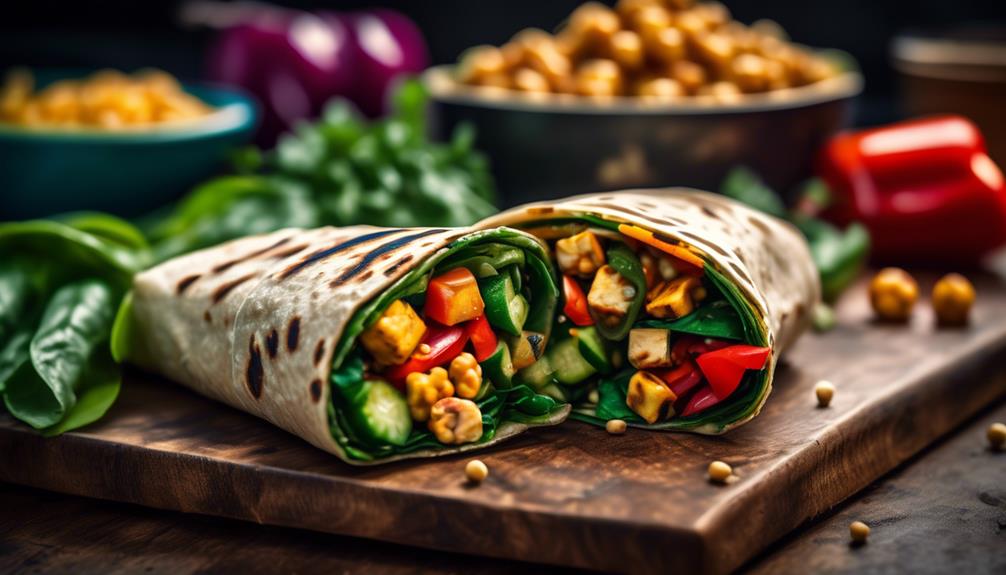
For a well-rounded and satisfying veggie wrap, incorporating a good source of protein is essential. Protein is a macronutrient that plays a crucial role in building and repairing tissues, promoting satiety, and supporting overall health. When following a low-carb diet, it's important to choose protein options that aren't only nutritious but also fit into your dietary restrictions.
Luckily, there are plenty of plant-based protein options that are low in carbs and can be easily added to your veggie wrap.
One of the benefits of incorporating protein into a low-carb diet is that it helps to keep you feeling full and satisfied for longer periods of time. This can be especially helpful if you're trying to manage your weight or reduce cravings for unhealthy snacks. Additionally, protein is important for maintaining and building lean muscle mass, which can help to support a healthy metabolism.
When it comes to adding protein to your veggie wrap, there are several plant-based options to consider. Some great choices include tofu, tempeh, chickpeas, lentils, and black beans. These ingredients not only provide a good amount of protein but also offer other important nutrients such as fiber, vitamins, and minerals.
You can easily incorporate these protein sources into your veggie wrap by sautéing them with your favorite seasonings or marinating them for added flavor.
Enhancing Flavor With Healthy Sauces and Spices
To further enhance the flavor of your protein-packed veggie wrap, explore the world of healthy sauces and spices. Adding the right combination of herbs and spices can elevate the taste of your wrap to a whole new level. Here are some ideas to get you started:
- Using herbs and spices to add depth to your sauces: Experiment with different herbs like basil, cilantro, or parsley to infuse freshness into your sauces. Spices like cumin, paprika, or turmeric can add a rich and warm flavor. Don't be afraid to mix and match to find your favorite combination.
- Incorporating fermented foods for added flavor: Fermented foods like kimchi, sauerkraut, or miso can provide a tangy and savory kick to your sauces. These foods aren't only delicious but also packed with probiotics that are beneficial for your gut health.
- Exploring international flavors: Take inspiration from different cuisines and incorporate their signature sauces and spices into your wrap. Add a dash of soy sauce and sesame oil for an Asian twist, or use harissa and cumin for a Moroccan flavor profile.
- Making your own dressings and dips: By making your own dressings and dips, you can control the ingredients and customize the flavors to your liking. Try making a creamy avocado dressing, a spicy sriracha mayo, or a zesty lemon tahini sauce.
Get creative and have fun experimenting with sauces and spices to enhance the flavor of your veggie wrap. Your taste buds will thank you!
Wrapping and Serving Your Low-Carb Veggie Creation
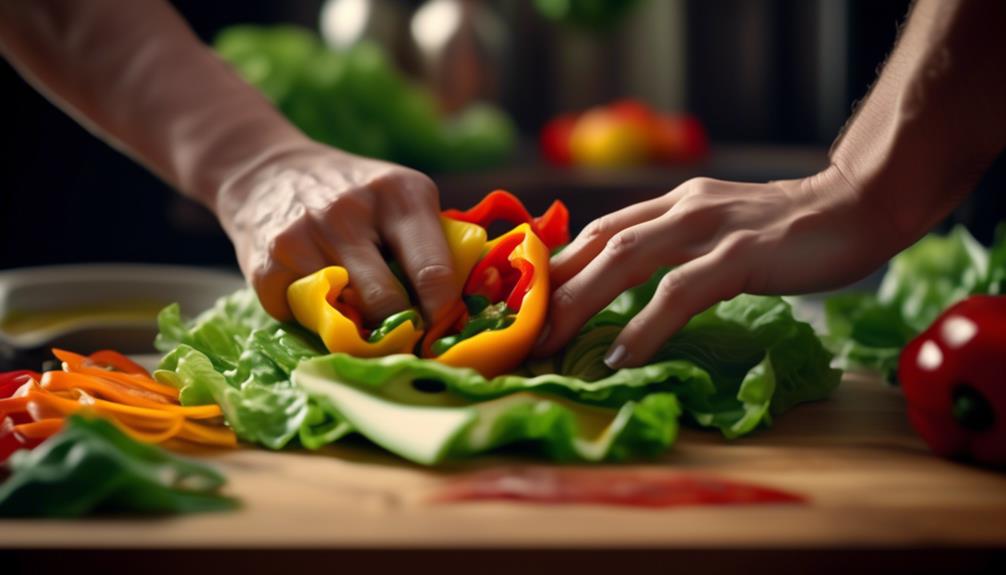
As you prepare to wrap and serve your low-carb veggie creation, consider these practical tips to ensure a delicious and satisfying meal.
When it comes to wrapping your veggie wrap, there are several different ways you can fold it to add variety and enhance the eating experience. One popular method is the traditional burrito-style wrap, where you fold both sides over the fillings and roll it tightly from bottom to top. This method works well for wraps with a lot of fillings or a saucy texture.
Another option is the envelope fold, where you fold one side over the fillings, then fold in the top and bottom edges before rolling it up. This method is great for wraps with fewer fillings or when you want a neater presentation.
Lastly, you can try the open-face fold, where you leave one side of the wrap open and fold the other side over the fillings. This method allows for easier eating and showcases the colorful ingredients.
In addition to different folding techniques, you can get creative with the presentation of your low-carb veggie wrap. Consider using a colorful lettuce leaf as the outer wrap for a vibrant and refreshing look. You can also cut the wrap into bite-sized pinwheels for a fun and appetizing presentation.
Another idea is to stack individual wraps on top of each other to create a tower-like structure. This adds visual appeal and makes serving easier.
Don't be afraid to experiment and find a presentation style that suits your taste and impresses your guests.
Conclusion
In conclusion, creating easy low-carb veggie wraps is a delicious and nutritious way to enjoy a satisfying meal. By choosing the right low-carb wrap and adding fresh veggies and protein, you can create a flavorful and filling dish.
Don't forget to enhance the taste with healthy sauces and spices. Wrapping and serving your creation is like a culinary masterpiece, bringing together all the vibrant colors and flavors into one delightful package.
So go ahead and indulge in these easy veggie wraps for a guilt-free and enjoyable meal.


